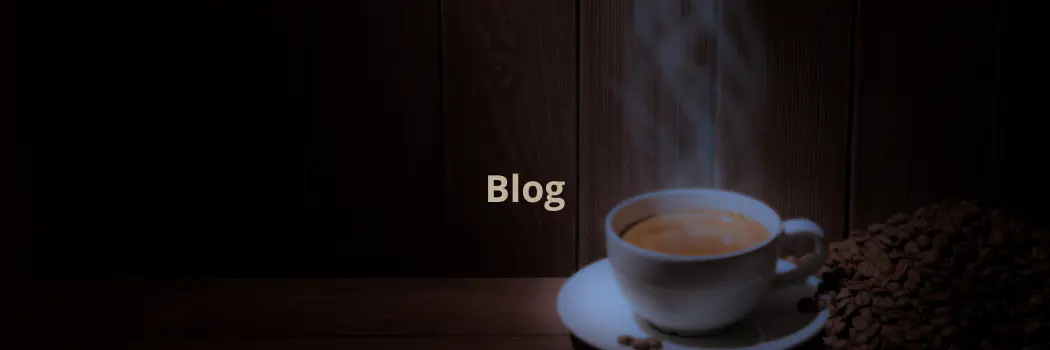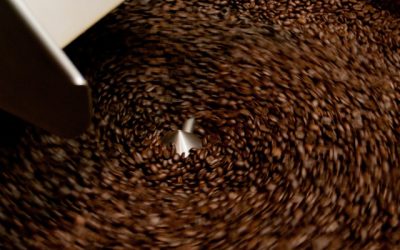Roasting Coffee is a heat process that turns coffee into the fragrant, dark brown beans we know and love.
Roasting brings out the aroma and flavor that is locked inside the green coffee beans. Beans are stored green, a state in which they can be kept without loss of quality or taste. A green bean has none of the characteristics of a roasted bean — it’s soft and spongy to the bite and smells grassy.
The Roasting Process causes chemical changes to take place as the beans are rapidly brought to very high temperatures. When they reach the peak of perfection, they are put quickly cool to stop the process. Roasting beans smell like coffee, and weigh less because the moisture has been roasted out. They are crunchy to the bite, ready to be ground and brewed.
Roasting as an art and a science
It takes years of training to become an expert roaster with the ability to “read” the beans and make decisions with split-second timing. The difference between perfectly coffee roast and a ruined batch can be a matter of seconds.
Knowing the types of roasting coffee:
Coffee roasters have various names for their favored roasts and there is very little industry standardization. This can cause some confusion when you’re buying, but in general, roasts fall into one of four color categories — light, medium, medium-dark and dark.
People think that the strong, rich flavor of darker roasts indicates a higher level of caffeine, but the truth is that light roasts actually have a slightly higher concentration.
The perfect roast is a personal choice that is sometimes influenced by national preference or geographic location. It’s a good idea to ask before you buy. There can be a world of difference between roasts.
Light Roast

The lighter is roasting the coffee, the more coffee’s origins are shown off, because the process has minimum influence.
There will be no oil on the surface of these beans because they roast are no long enough for the oils to break through to the surface.
Medium Roast

Medium roast is a slightly darker shade of brown. The colour change is due by the natural sugars within the beans that begin to caramelise. Like the light colour, medium roast is more delicious and healthy.
Has a stronger flavor and a non-oily surface. It’s often referred to as the American roast because it is generally preferred in the United States.
Ideally to make Moka, French etc…You should choose 100% Arabica and organic coffee
Medium dark roast

Beans are a dark shade of brown and the oils inside of the beans are more visible. Usually dark roast is a process to cover defects and inconsistencies caused during production. It’s cheap, low-grade coffee.
Because of this you must choose 100% Arabica and organic coffee. This type of roasting normally is to make a “classic italian espresso”, but in a health way.
Dark Roast

Dark roast beans lost the original flavours and destroy acidity, the beans are burnt and charred. This type of roast is done to hide how awful the green coffee tastes due to poor processing. Usually only the cheapest and low-grade robusta coffee is over roasting.
Because of this you must choose 100% Arabica and organic coffee. The use of this type of roasting is to make a “classic italian espresso”.
Roasting reduces the amount of Chlorogenic acids, but form other antioxidants compounds. After roasting coffee contains 10/15 % less caffeine. But dark roast = more caffeine.
The oil in boiled coffee has cafestol and kahweol, 2 compounds whose calls Diterpenes , which can raise LDL cholesterol, and lower HDL. The clinical significance of such small increases in cholesterol may be questionable, because it is no associations with an increase in cardiovascular deaths.
How we can verify, coffee is good for some and bad for others. It all depends on how you choose and prepare your coffee. You should to listen to your body and feel what it says to you.
Keep beans airtight and cool
Your beans’ greatest enemies are air, moisture, heat, and light.
Want a good coffee?



